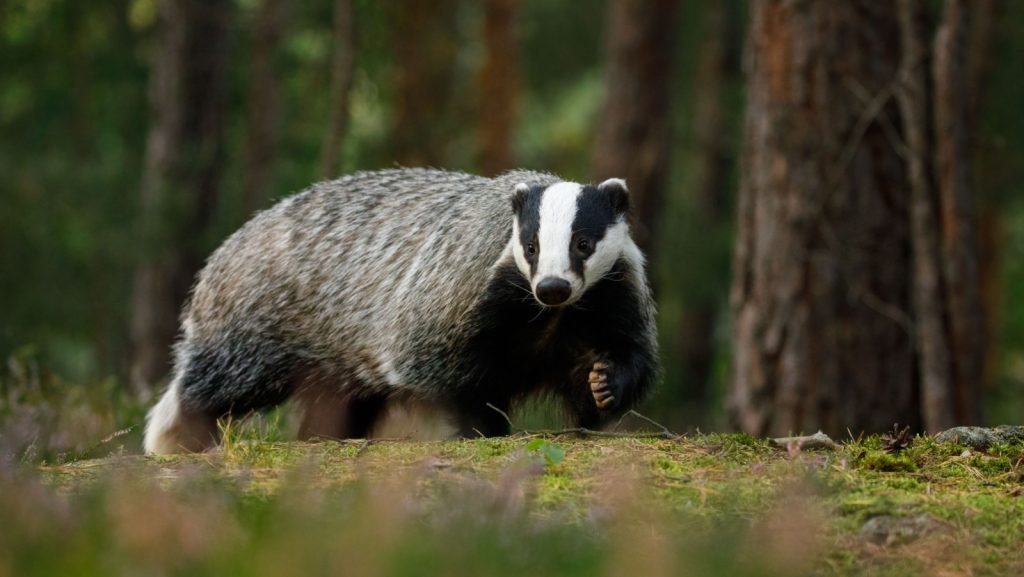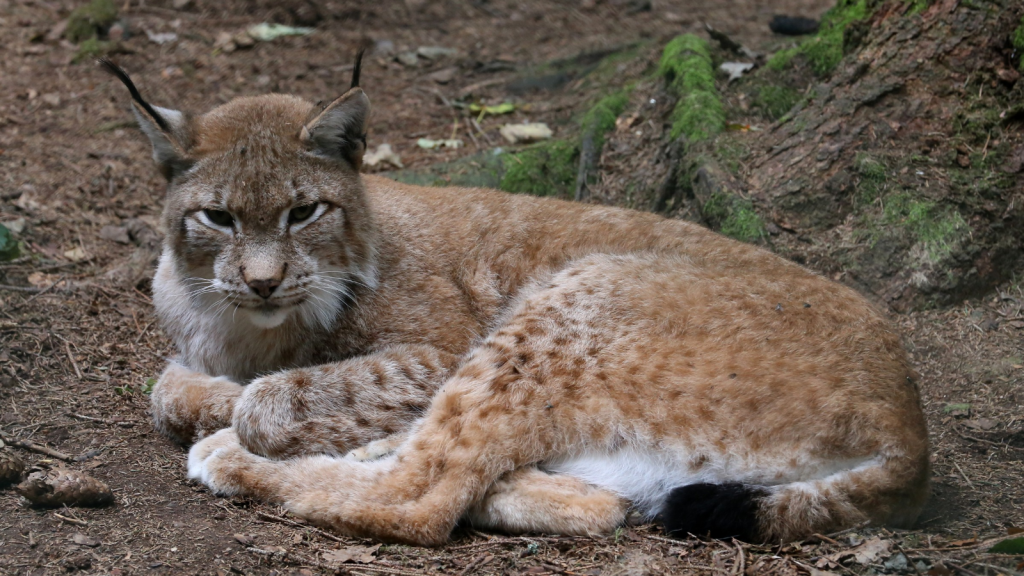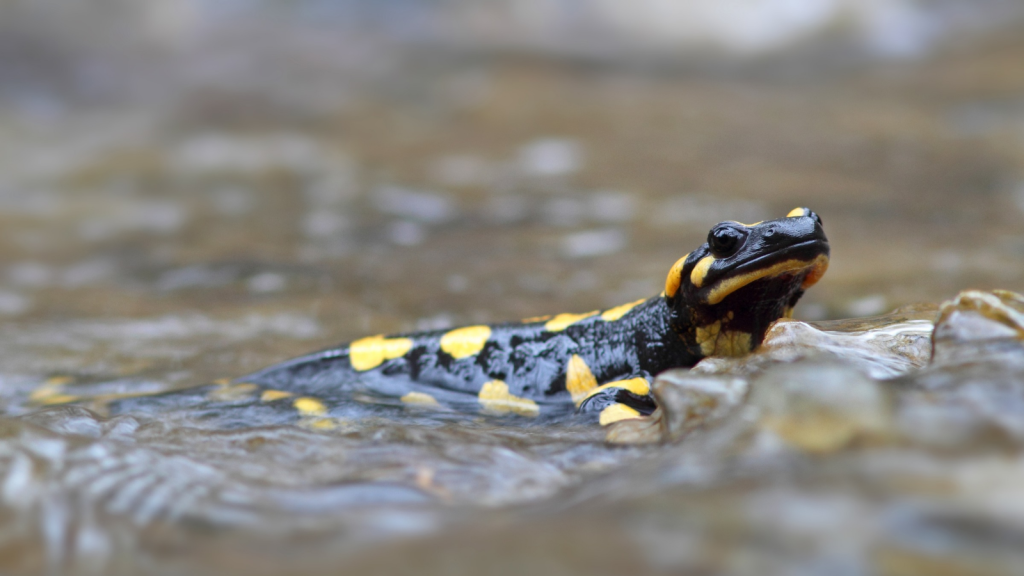The Black Forest, or Schwarzwald as it’s known in German, is a magical realm of dense woodlands and rolling hills. This ancient forest, stretching across southwestern Germany, is home to a rich tapestry of wildlife. From the tiniest insects to majestic mammals, the Black Forest teems with life in every nook and cranny. Join us on a journey through this enchanting woodland as we explore some of its most fascinating inhabitants. You might be surprised by the creatures that call this misty, green paradise home!
European Badger

The European badger is a sturdy, striped creature that roams the forest floor at night. With its distinctive black and white face, it’s a sight to behold when spotted in the moonlight. These social animals live in groups called clans and dig extensive underground burrows known as setts. Badgers are omnivorous and play a crucial role in the forest ecosystem by controlling populations of small mammals and insects.
Red Deer

The red deer is the largest native land mammal in the Black Forest. These elegant creatures are known for their impressive antlers, which the males shed and regrow each year. During autumn, the forest echoes with the sound of stags bellowing as they compete for mates. Red deer are excellent swimmers and can often be seen crossing rivers and lakes within the forest.
Eurasian Lynx

The Eurasian lynx is a elusive and rare sight in the Black Forest. These beautiful cats have tufted ears and sport spotted coats that help them blend into the dappled forest light. They were reintroduced to the area in 2016 after being absent for nearly 200 years. Lynx are solitary hunters, primarily preying on roe deer and helping to maintain a balanced ecosystem.
Wild Boar

Wild boars are tough, bristly creatures that root through the forest floor in search of food. They’re known for their strength and can be quite formidable when protecting their young. Despite their rough appearance, they’re intelligent animals with a complex social structure. Wild boars are excellent swimmers and can run at speeds of up to 30 mph when needed.
European Pine Marten

The European pine marten is a sleek, agile hunter that spends much of its time in the trees. With its rich brown fur and distinctive cream-coloured bib, it’s a handsome creature to spot. These clever animals are known for their acrobatic skills as they leap from branch to branch. Pine martens have an omnivorous diet, feeding on everything from small mammals and birds to fruits and insects.
Black Woodpecker

The black woodpecker is the largest woodpecker in Europe, about the size of a crow. Its striking appearance, with jet-black plumage and a bright red cap, makes it stand out against the green forest backdrop. Their powerful drumming can be heard echoing through the woods as they search for insects in dead trees. These birds play a vital role in forest health by controlling insect populations and creating nesting cavities for other species.
Fire Salamander

The fire salamander is a striking amphibian with vibrant yellow spots on a black background. These creatures prefer damp, shaded areas of the forest and are most active at night or on rainy days. Despite their bright colours, they’re quite shy and are rarely seen unless actively searched for. Fire salamanders can secrete a toxic substance from glands on their skin as a defence mechanism against predators.
Red Squirrel

The charming red squirrel is a common sight in the Black Forest. With their tufted ears and bushy tails, they’re a favourite among forest visitors. These nimble creatures are expert climbers and can often be seen leaping between trees with incredible agility. Red squirrels play a crucial role in forest regeneration by burying nuts and seeds, some of which grow into new trees.
Capercaillie

The capercaillie, also known as the wood grouse, is the largest member of the grouse family. Males are known for their elaborate courtship displays, fanning their tails and making unusual clicking and popping sounds. Sadly, their numbers have declined in recent years due to habitat loss. Capercaillies have a specialised diet, feeding primarily on conifer needles during winter months.
European Honey Buzzard

The European honey buzzard is a bird of prey with a particular taste for wasp and bee larvae. Unlike many raptors, they have specially adapted feathers around their eyes and nostrils to protect them from stings. These birds are summer visitors to the Black Forest, arriving from Africa to breed. Honey buzzards have a unique ability to locate and dig up underground wasp nests using their specially adapted claws.
Hazel Dormouse

The hazel dormouse is a tiny, golden-brown rodent with large eyes and a fluffy tail. These nocturnal creatures spend much of their time in the tree canopy, rarely coming down to the ground. They’re known for their long hibernation period, which can last up to six months. Dormice are excellent climbers, using their prehensile tails for balance as they move through the treetops.
Purple Emperor Butterfly

The purple emperor is one of the most magnificent butterflies found in the Black Forest. Males have wings that shine with a brilliant purple sheen when caught in the right light. These butterflies spend most of their time high in the tree canopy, making them a rare and exciting find for nature enthusiasts. Interestingly, purple emperors are attracted to some unexpected food sources, including carrion and dung, which provide them with essential minerals.
10 Desert Predators With Unique Hunting Adaptations

The harsh desert environment has shaped some of the most remarkable hunters on Earth. These animals have evolved incredible ways to survive and thrive in a world of extreme heat and scarcity. From silent stalkers to venomous ambush experts, desert predators are masters of adaptation. Their hunting techniques are as varied as they are fascinating, each perfectly suited to the challenges of their arid homes. Join us as we explore ten of these amazing creatures and the special tricks they use to catch their prey.
Read More: 10 Desert Predators With Unique Hunting Adaptations
15 Animals That Eat Hornets

Nature never fails to amaze me. Who would’ve thought so many creatures would prey on hornets? Their painful stings and fierce and aggressive behaviour make them seem like a pretty unappetizing meal to me. While hornets might seem like formidable insects that few creatures would dare to tangle with, they actually have quite a few natural enemies. From nimble birds to crafty mammals, plenty of other creatures make meals out of these stinging insects.
Read More: 15 Animals That Eat Hornets
Becky is a fervent wildlife enthusiast and pet care expert with a diploma in canine nutrition. Her love for animals stretches beyond the domestic, embracing the wild tapestry of global fauna. With over a decade of experience in animal welfare, Becky lends her expertise to OutlandishOwl through insightful articles, captivating wildlife information, and invaluable guidance on pet nutrition. Her work embodies a deep commitment to understanding the intricate lives of animals and a passion for educating others on sustaining natural habitats. Becky's hands-on conservation efforts and her knack for translating complex dietary science into practical pet feeding tips make her an indispensable voice for creatures great and small.




